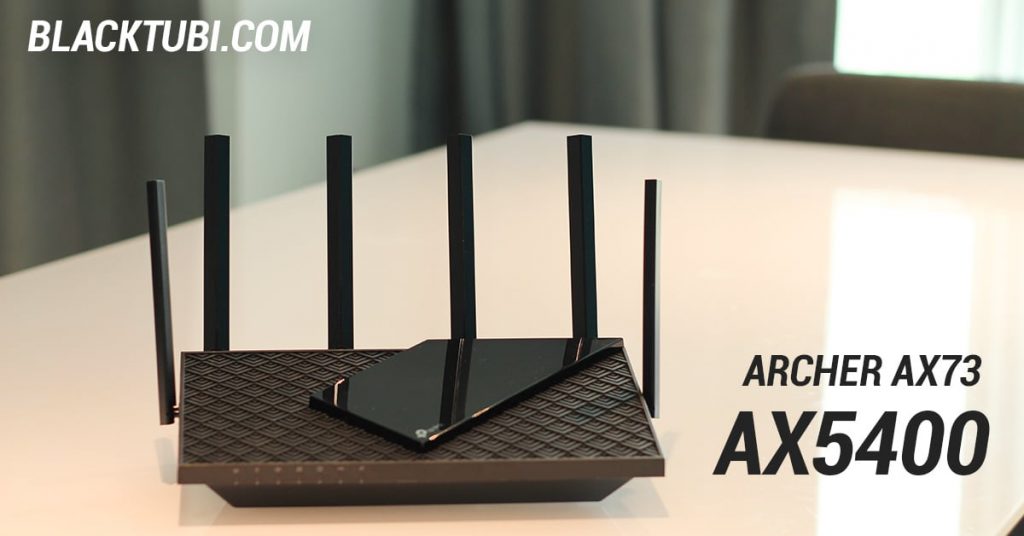
It’s 2021 and the pandemic is still here. This means we’re still working from home until things get better. Having a reliable and fast WiFi connection is crucial for work productivity. Thus, that brings us to the new TP-Link Archer AX73, a high-performance AX5400 wireless router now available in Malaysia.
The Archer AX73 is a high-performance WiFi 6 router. It can support total WiFi link speed up to 5400Mbps with dual-band configuration. In fact, the router supported the 160Mhz mode which means the 5Ghz WiFi network can get really fast if you have a 160Mhz supported WiFi adapter.
What’s so good about the Archer AX73 is the price. It is available for sale at just RM399 in Malaysia with a 3 years one-to-one exchange hardware warranty and after sales support from TP-Link Malaysia.
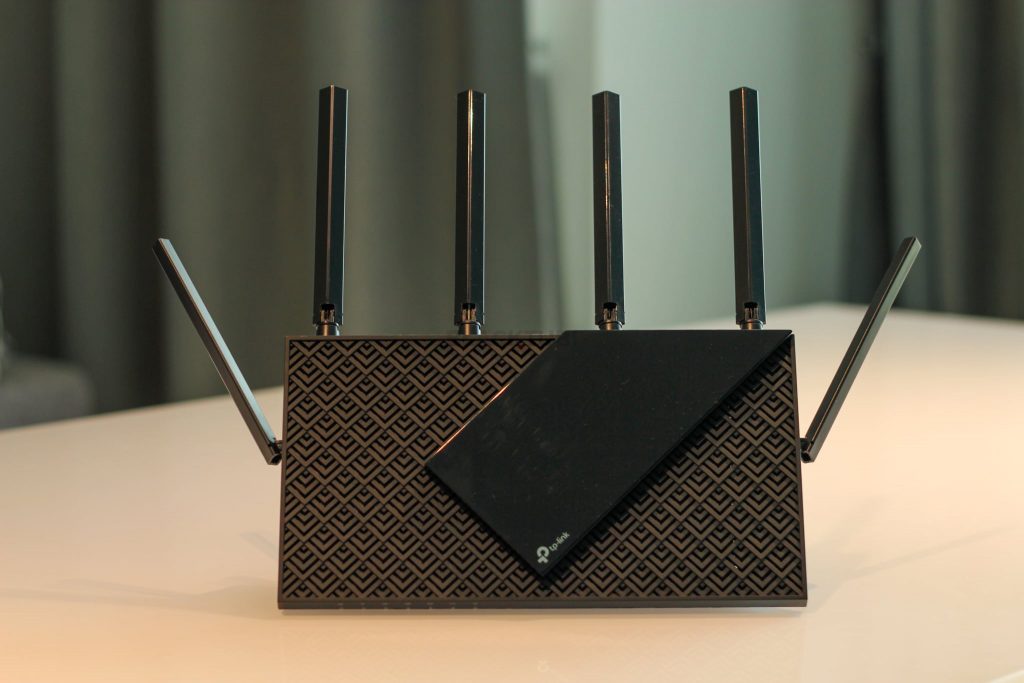
Table of Contents
The first thing that you’ll notice from the Archer AX73 is the 6 antennas. These antennas are real and not just for show. We’ve taken apart router and identified that 4 antennas are used for the 5Ghz network and 2 antennas are used for the 2.4Ghz network.
The reason why there are 6 antennas is because the Archer AX73 uses an individual antenna for each transmit channel rather than combining both the 2.4Ghz and 5Ghz into a single antenna. Rather than using a dual-band antenna, each antennas on the router are optimized for their desired frequency, resulting in better performance without compromises.
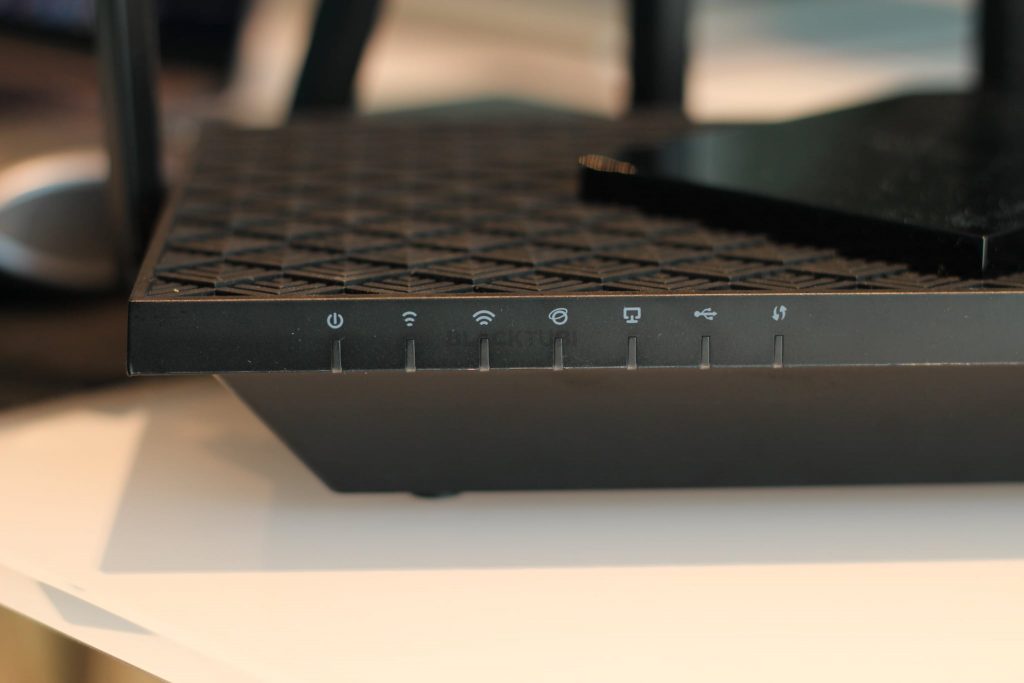
The Archer AX73 also runs really cool and stable in our test. It’s because TP-Link used a much larger heatsink and added more ventilation. This is why the Archer AX73 is so big and heavy! In fact, it barely heats up even on prolonged stress test and certainly much cooler than the infamous Archer AX50.
Hardware and Specs
| Wireless 2.4Ghz | Wi-Fi 6 up to 574Mbps (40Mhz 2X2) |
| Wireless 5Ghz | Wi-Fi 6 up to 4804Mbps (160Mhz 4X4) |
| WiFi Features | OFDMA, MU-MIMO, Beamforming, WPA3, OneMesh |
| CPU | Broadcom BCM6750 1.5Ghz Triple-Core |
| Ethernet Ports | 1x Gigabit WAN port + 4x Gigabit LAN port |
| USB | 1x USB 3.0 port |
The Archer AX73 is powered by a fast Broadcom 1.5Ghz Triple-Core CPU and comes with 512MB RAM. TP-Link says this router can actually support up to 200 devices connected simultaneously. While I don’t have 200 devices to test, the router do work realiably in my home with close to 50 devices connected to it.
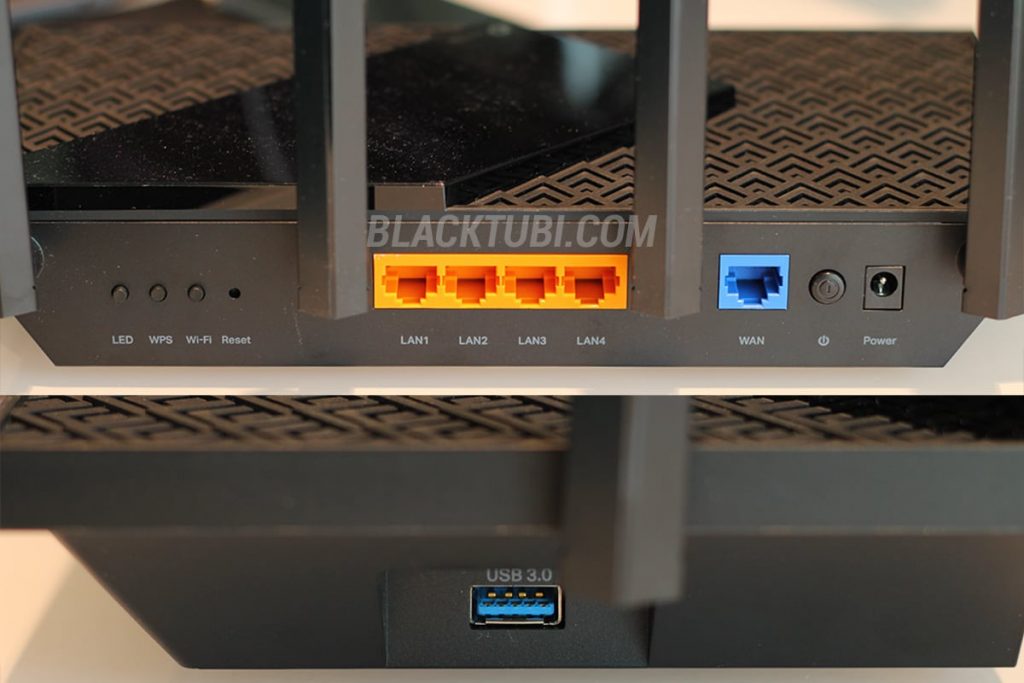
Connectivity wise, the router comes with 4 Gigabit Ethernet LAN ports and a single Gigabit Ethernet WAN port. It also comes with a USB 3.0 port which can be used for file sharing and printer sharing to devices connected to the wireless router. The LED status indicator on the router can be disabled if needed.
Unboxing Archer AX73
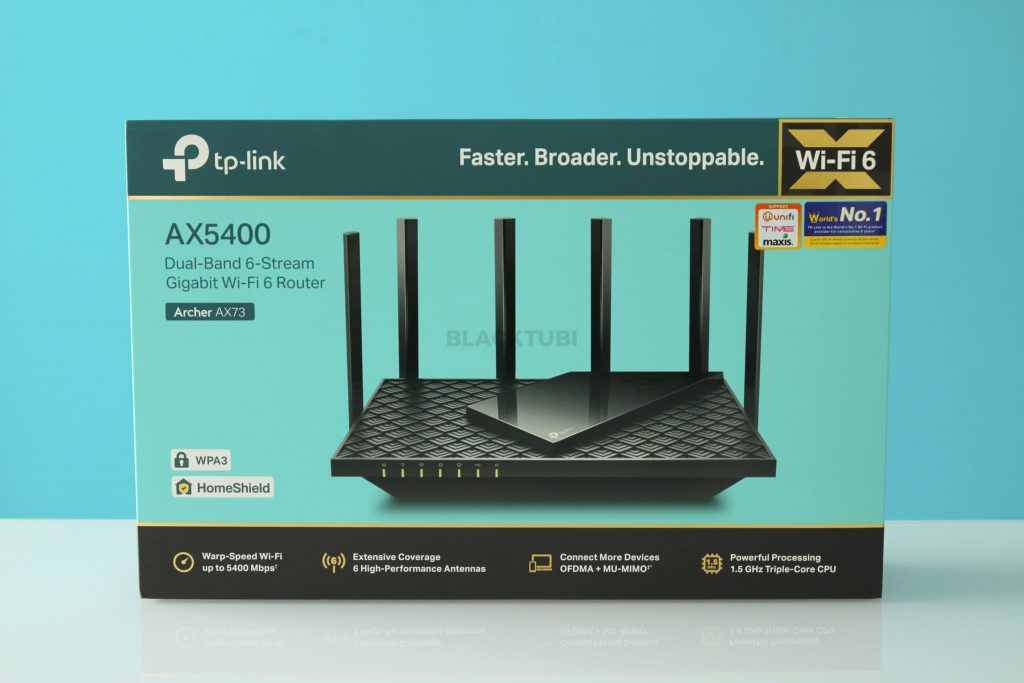
The box of Archer AX73 for Malaysia market comes labeled with support for TM Unifi, Maxis Fibre and TIME Fibre.
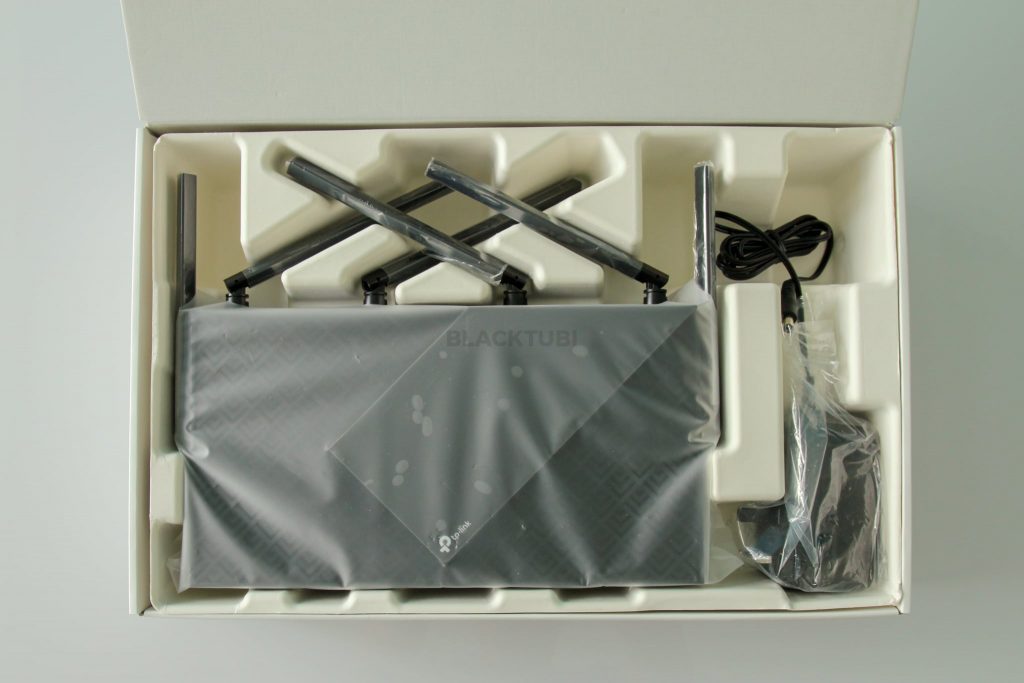
Each antenna on router and accessories are individually wrapped. The cardboard box also provide sufficient protection during shipping. It comes with a CAT5E Gigabit Ethernet LAN cable and a 12V power adapter.
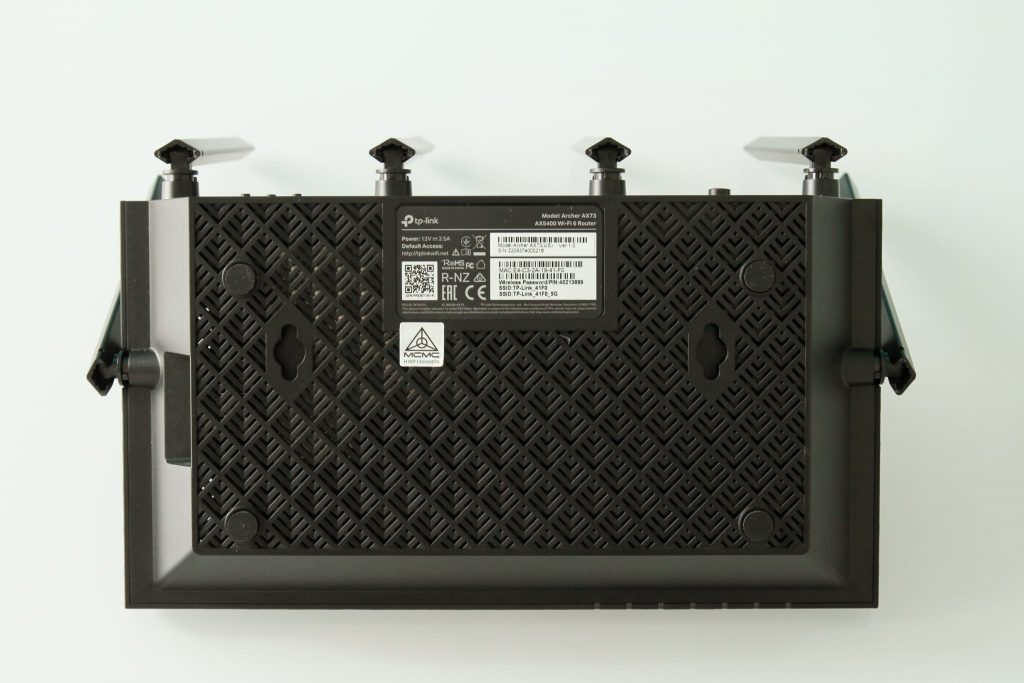
It is possible to wall-mount the wireless router with 2 mounting holes behind the product. The default WiFi name and password is also labeled on the back of the router. Similar to the top, the entire bottom of the product is full of ventilation holes for enhanced cooling performance.
Quick Teardown
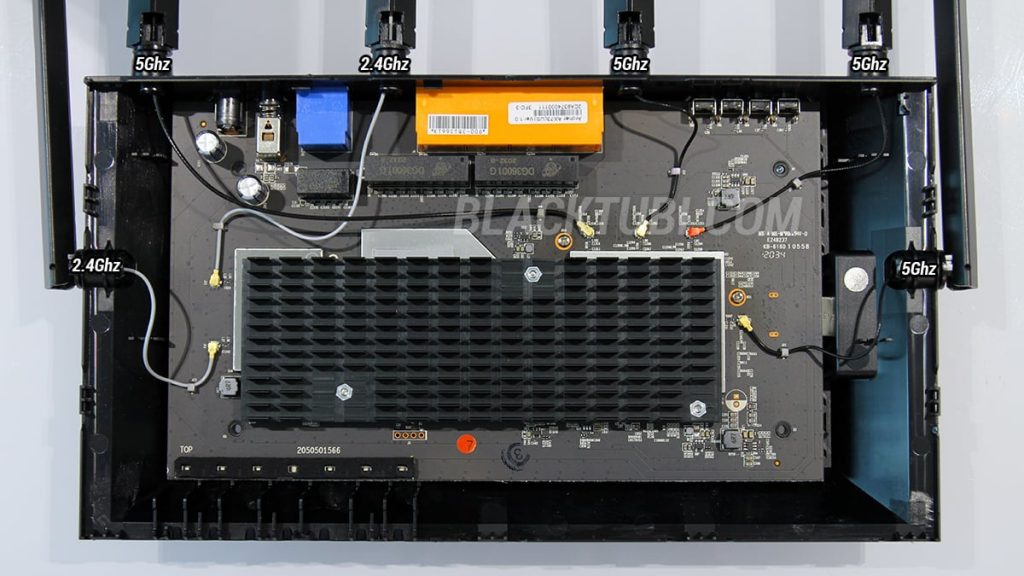
I also did a simple teardown for the Archer AX73. Since I am not a hardware enginee, I won’t comment much about this. WiFi related components are shielded and there’s a decent sized heatsink to cool down the router. This explains why this router barely heats up.
Wi-Fi Performance
With the beefy specifications, let’s see if that actually transfer into actual performance in our benchmark test. I will be using a laptop with the Intel AX200 wireless adapter and an iPhone to test the 5Ghz Wi-Fi 6 performance of TP-Link Archer AX73. I will be skipping the 2.4Ghz result as it is probably irrelevant these days given how congested is the 2.4Ghz channel.
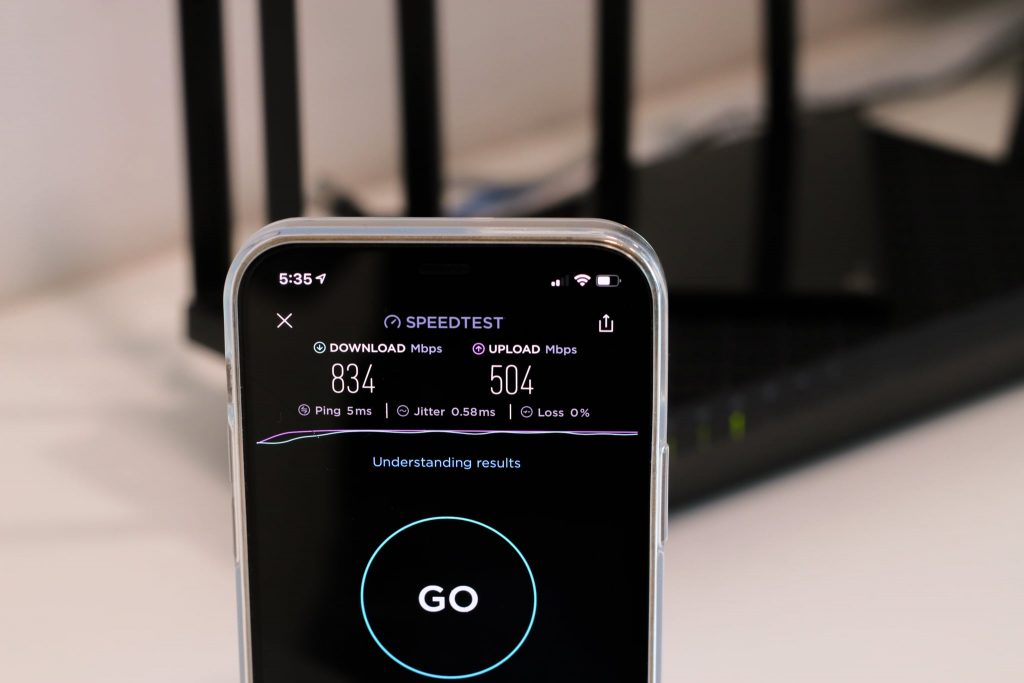
At short distance to the router, my iPhone can achieve over 800Mbps on the 5Ghz Wi-Fi network. This is not surprising considering most Wi-Fi 6 routers, even the budget models like Archer AX10 can deliver such performance. What we really want to know is the long range signal coverage and performance.
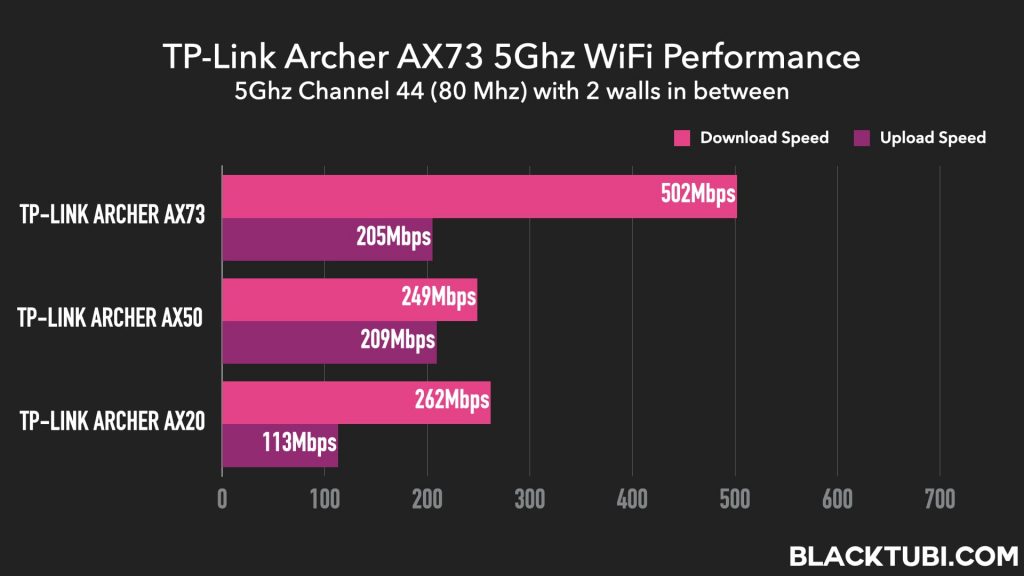
The 5Ghz signal on the Archer AX73 is really strong! The 5Ghz coverage and performance is faster and stronger than every single AX3000 wireless router that we’ve tested on this site. The performance is also stable and consistently replicable througout our review.
Security wise, it can support the latest WPA3 security right out of the box. However, I do not recommend using WPA3 as older WiFi devices may face compatibility issues. Considering a router last many years, you can consider enabling it few more years in the future as older devices are phased out from your home.
Firmware and Features
TP-Link maintain their philosophy of not overly bloating the firmware with features and I think it works here. Reliability is the keyword here as I find the Archer AX73 firmware is very well optimized. During my test, I do not face any issues with the router. The firmware always responded fast consistently.
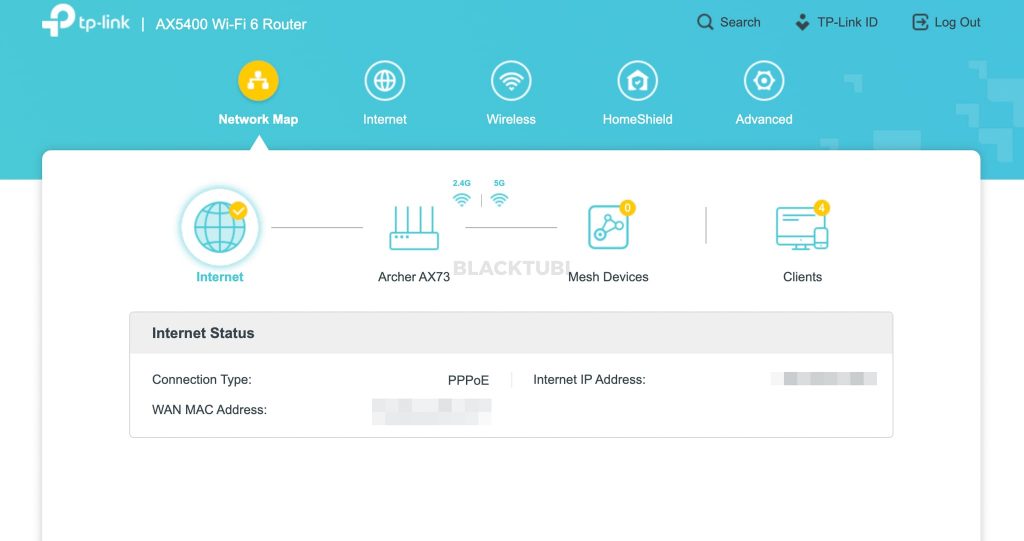
The web interface is simple to operate and certainly very easy to setup the router. It can support TM Unifi, Maxis Fibre and all ISPs in Malaysia. For most users, it will involve connecting the router to the modem and use the setup wizard on the interface. The VLAN profile must be selected for TM Unifi or Maxis Fibre users in Malaysia.
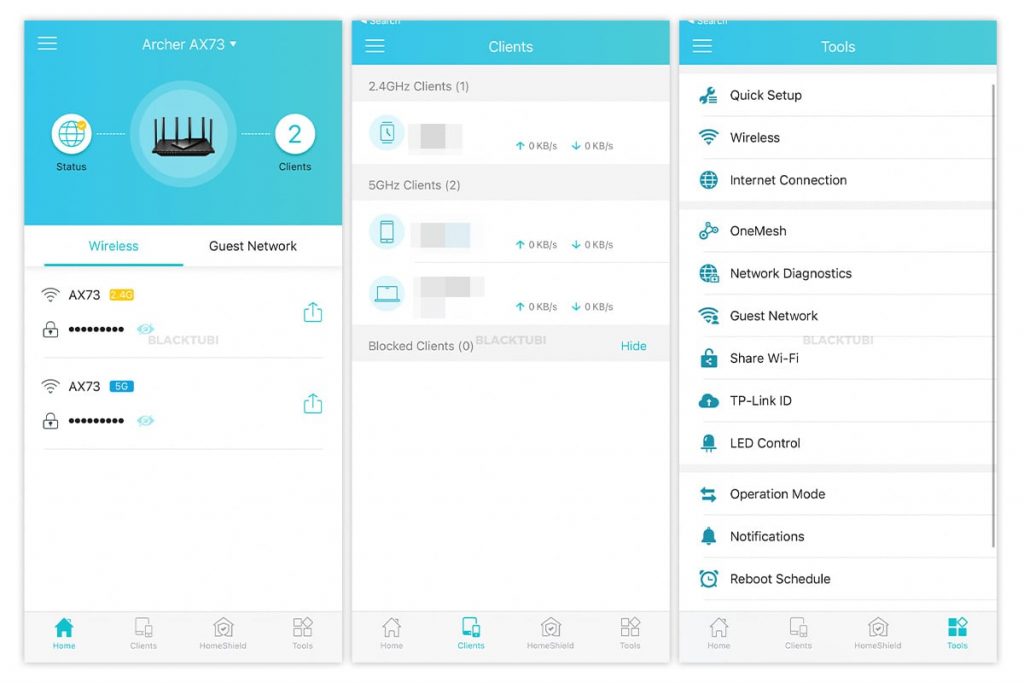
TP-Link Tether app offers a quick overview of your home network condition such as connected devices and network speed. The app is well designed and really responsive in our test. It is securely linked to TP-Link cloud and authenticated with your personal TP-Link account. TP-Link HomeShield security feature is only accessible on the app as well.
TP-Link HomeShield Security
TP-Link HomeShield is their new commercial grade firewall replacing the previous HomeCare feature. It can protect your devices from accessing a malicious website containing a virus or malware with an advanced antivirus firewall. This feature is now powered by Avira Antivirus database.
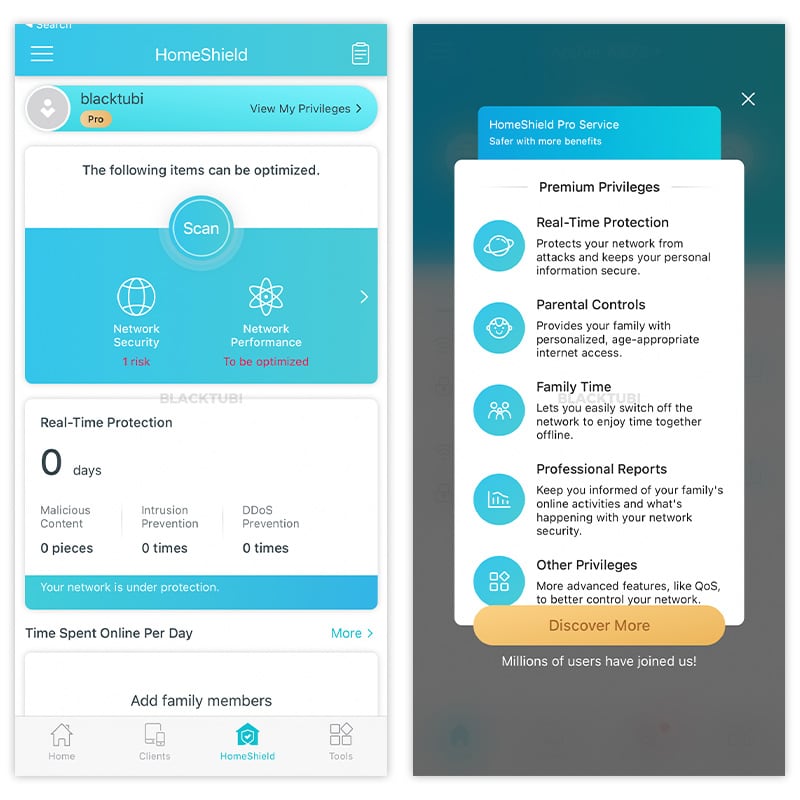
It also added protection for smart home and IoT devices. Considering these devices rarely receive firmware updates, having extra protection is certainly helpful. TP-Link claims it can protect an insecure device from being used as a loophole to launch attacks on your home network. We have no way of verifying these claims.
HomeShield Parental Control
TP-Link new HomeShield parental control is also much smarter than before. It can perform content filtering by category and usage time limitation. The categories are more comprehensive covering more websites than before. Based on our testing on some known sites, it is certainly more effective than HomeCare and other similar systems that we have tested on other brands.
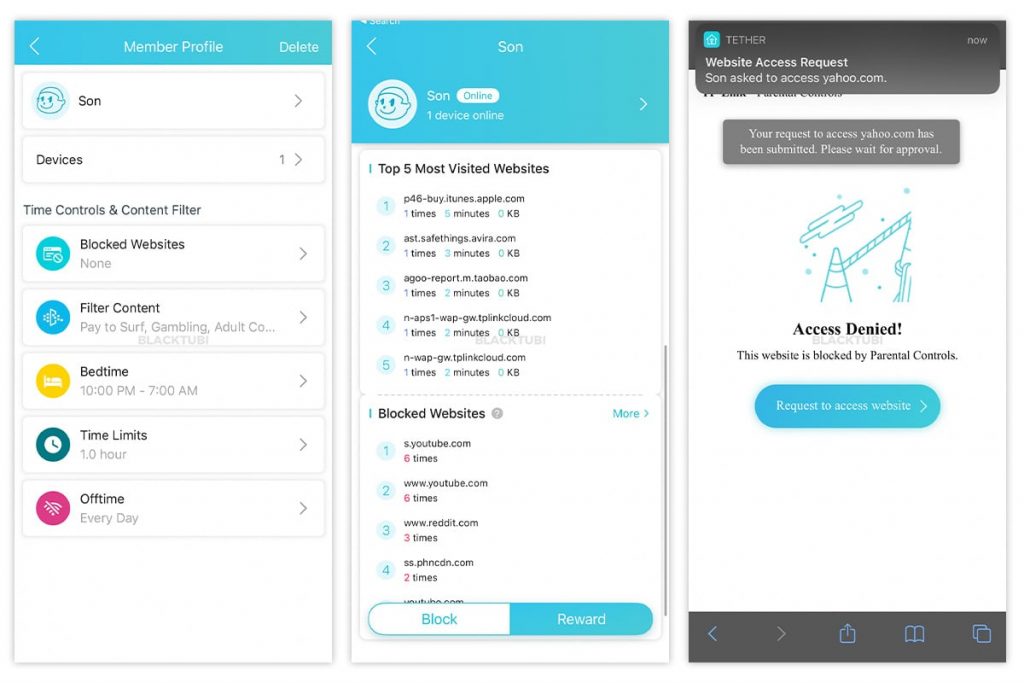
What’s so great about the new parental control is the ability to display usage charts and web history. It will show the top browsed website and attempts to access a blocked website by each user. If a page is blocked by the parental control feature, the user can request for access in which the admin can approve it via the TP-Link Tether app.
However, the upgraded HomeShield feature is not fully free. The Free tier only comes with the basic firewall without the advanced malicious content filtering feature. It also does not provide the comprehensive reporting of the parental control feature. More details available on TP-Link website here.
TP-Link HomeShield feature is a really robust parental control. While TP-Link provide a 30 days free trial of the Pro tier, it will cost RM24.90 per month after the trial has ended. I am fine with a subscription based business model but I find the price is too much.
OneMesh Capability
For those staying in a bigger home, it’s possible to link the Archer AX73 with a OneMesh extender. The OneMesh extender will then work together with the Archer AX73 resulting in a stronger WiFi coverage with true mesh WiFi features like seamless roaming and band steering unlike a traditional WiFi extender.
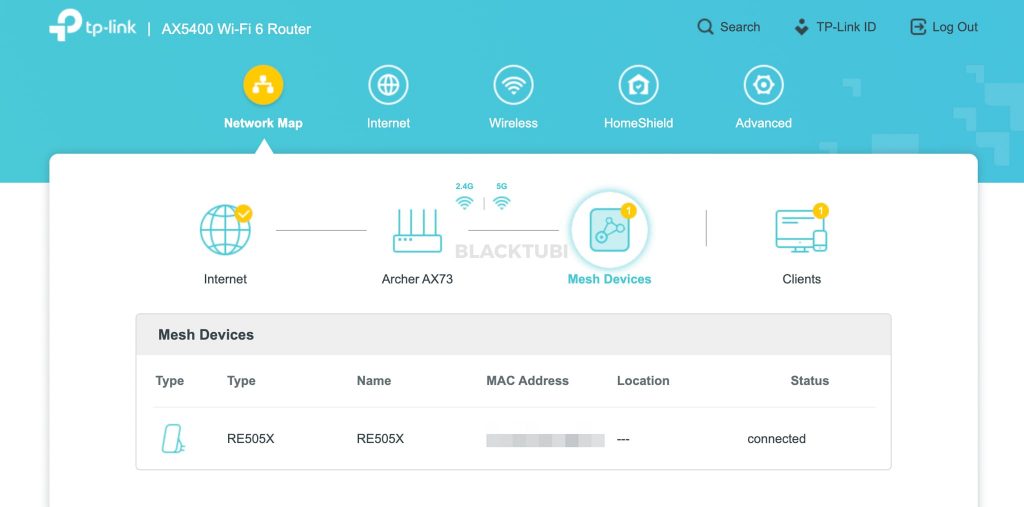
For the Archer AX73, I will only recommend linking it with a WiFi 6 OneMesh extender such as the RE505X and RE605X. Unfortunately, TP-Link does not allow router to router OneMesh currently. You also cannot link the Archer AX73 to a Deco Mesh WiFi system directly as they are based on a different technology.
Closing Thoughts
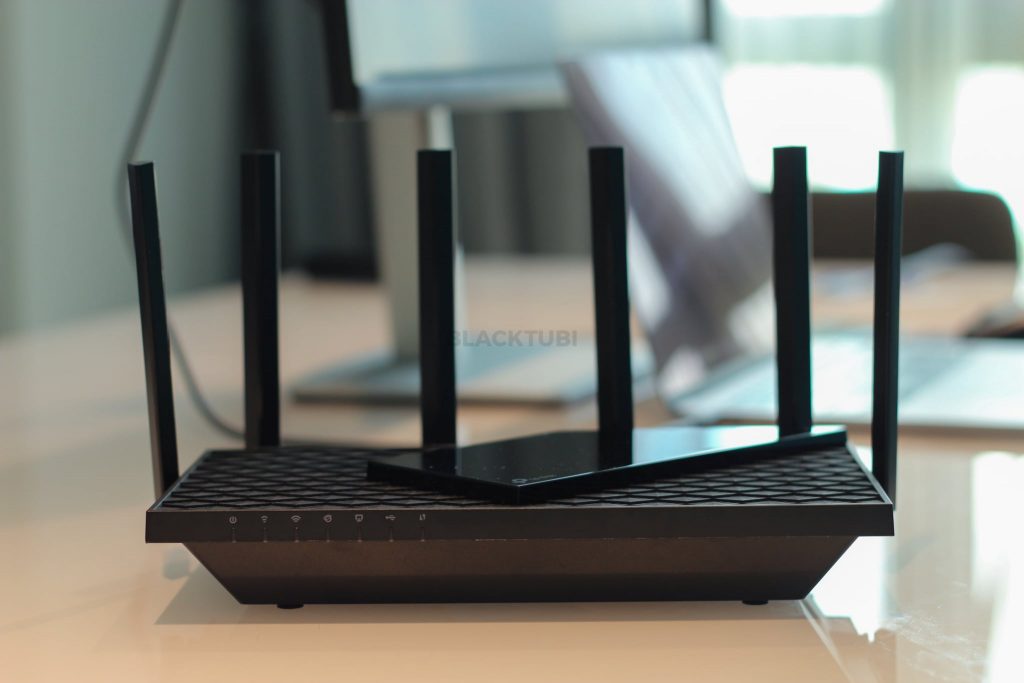
At RM399, the Archer AX73 offers really good performance even when comparing to some other routers that cost twice as much. It offers really good 5Ghz WiFi coverage and very fast WiFi speed on the 5Ghz channel with 160Mhz. Coupled with a fast 1.5Ghz Triple-Core CPU, it is a really good product from TP-Link.
TP-Link software is also smarter than before with a robust class-leading parental control feature. TP-Link is committed to provide more security to smart home and IoT devices with the new HomeSuite security suite. WPA3 security is also supported right out of the box.
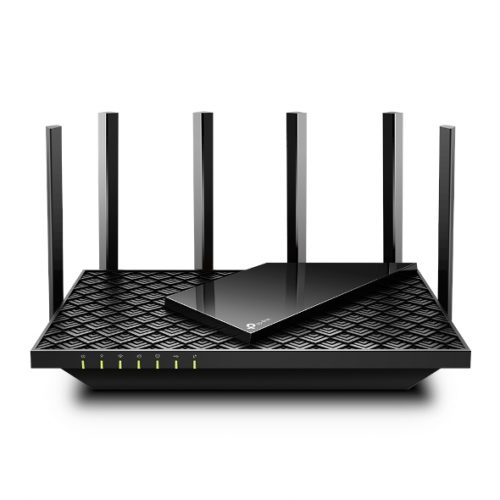
TP-Link Archer AX73
9.2
Tubi Rating
pros
- Premium performance at affordable price
- Robust HomeShield parental control solution
- Stable and reliable software
- Good security
CONS
- Advanced HomeShield features require a subscription
- Limited OneMesh support

Dear Sir ,
I have purchased AX20 , however I suspect a year or two down the line I will find out I could’ve spent a little more to get better hardware
AX73 is available as a replacement with extra charge for the price difference , However the AX20 is
a)quite stable
b)with no heat issues and
c)the range works nicely in my 1200 sq ft flat .
Will the AX73 improve in any of the above parameters or will be worse . Is the hardware better ? I heard the AX50 runs quite hot , so posted my doubt.
1) The stability is more or less the same. The AX20 is already pretty stable.
2) Yup, no heat issue with Archer AX73, in fact, is is slightly cooler than AX20
3) The range is better than the AX20 for sure
Thanks Sir ,
One final question , I see that the processor in the AX20 is a quad core BCM6755 while the AX73 has a triple core BCM6750 , that is an odd choice for a newer router , is this something that a consumer should bother with , or is it architecture and scalability related?
It is more on product decision and strategy. The AX73 uses the BCM6750 as TP-Link opted to use a better 5Ghz radio (BCM43684) instead. The BCM6755 comes with both 2.4Ghz and 5Ghz radio.
does this router will guarantee a stable network connection all the time without any internet spike? Since im using android box too does it can give a stable network connection to this device while another 5 different devices simultaneously connect to it? the reason i ask this cause currently im using unifi given router and it does not give a stable network connection at all.
Well it depends on the source of the spike. The AX73 is a great router but if the spike is caused by the service provider network then no matter what router you change, it wouldn’t fix it. However, if the spike is caused by your old router being too slow, getting a better router will fix that.
I in plan upgrade my router. it either Asus RT-AX55 or Tp Link Archer AX73. Which one is more better in performance & coverage for large house.
The Archer AX73 from TP-Link performs way better than the RT-AX55. The RT-AX55 is the direct competitor to TP-Link Archer AX10 instead.
Great content! Currently using Asus Blue Cave, you reckon this would be an upgrade (not happy with the range)?
I am torn between this, Asus RT-AC86U or waiting for Asus RT-AX68U. Thanks!
Yes, the Archer AX73 is significantly better than the ASUS Blue Cave.
I am having ASUS ac68u, will it be an upgrade if i change to this? If this brand better and stable than ASUS? i am always ASUS fans i haven’t tried other brand before. Thanks~
The signal coverage and WiFi speed of the Archer AX73 is significantly better than the RT-AC68U. However, stability wise, the RT-AC68U is a legend. Even new ASUS routers are no longer that stable. The Archer AX73 is really stable but it is no match against the RT-AC68U which can run for months without needing a reboot.
Hi. Glad I came to this website. First of, I live in a 1800 sq ft apartment and subscribing to the Time 500mpbs plan. Was thinking upgrading to my existing Asus RT-AC1200 router to either a TP Link Ax20 or a Huawei Ax3 Pro. Question, between the Ax20 and Ax3 Pro, which is better? And, between the winner of the 2, should I consider the AX73? Usage is one person primarily with about 10 wireless devices. The rest are via LAN. Another concern is that the 5GHz of the AC1200 is getting weak. I do need coverage at the far… Read more »
AX20 is better than AX3 Pro with stronger signal and lower thermals. Get the AX73 instead, slightly more expensive but performance is way better.
Thank you. Bought. ?
Hi, I am using a Dlink DIR3060 right now with Unifi 300mbps plan. Will the AX73 be an upgrade to that?
Yes, the AX73 is faster than the DIR-3060 from D-Link.
Alright, thanks! One more thing, how is the mesh performance of the TP Link vs D link? That being said, there’s still no news about the RE505X in Malaysia… haha
I find the whole roaming capability to be superior than D-Link’s. However, this is only applicable for just the RE505X. The cheaper OneMesh extenders are slow.
Ok, thanks for answering my questions! Just ordered the AX73 and hopefully the RE505X will be released real soon
Just want to say thanks for the review and keep this up! AM a big fan of your site, very informative and easy to understand for a guy like me with average tech knowledge! 🙂
Does this support Maxis VOIP? Currently using Asus AC1200+ which has the VOIP setting from LAN3 in the firmware.
It does not support VOIP the same way like how ASUS did. TP-Link prefer users to change the Maxis router into bridge mode.
Just got this setup and it’s quite impressive. Much better WiFi performance than my previous AC4000 with deadzone gone in my 2 story house. Paired with my AX3000 pcie WiFi card, I got up to 480mbps download speeds on my Unifi connection, compared to 380-400mbps previously. Ping times are also much better, speedtest shows 3ms on AX , compared to 8ms on WiFi 5. The card consistently drops to 2.4ghz due to Smart Connect though and gets 90mbps – setting 5ghz preferred did not work. I did not want to disable Smart Connect, so I had to make a Guest… Read more »
Yup, TP-Link recommend using the web interface if you use Unifi or Maxis Fibre. However, we feedback this to them and they told us they will be adding this to the app soon.
The smart connect is kinda Intel’s fault due to their poor channel selection implementation on their AX200 WiFi adapter. They fixed it on an older driver but the issue came back.
Great review. Can 2 units of AX73 be meshed together instead of using extender?
Unfortunately, TP-Link does not allow this at this moment.
hi. Good review, thanks. however i have a suggestion. I know you are testing wifi 6 speed because this is a wifi 6 device. but is it possible for you to test and publish AC wifi speed as well because in current environment, we will usually have a mix of AC AX device for a home/office
Great idea, I may add this into my future review.
that would be great!